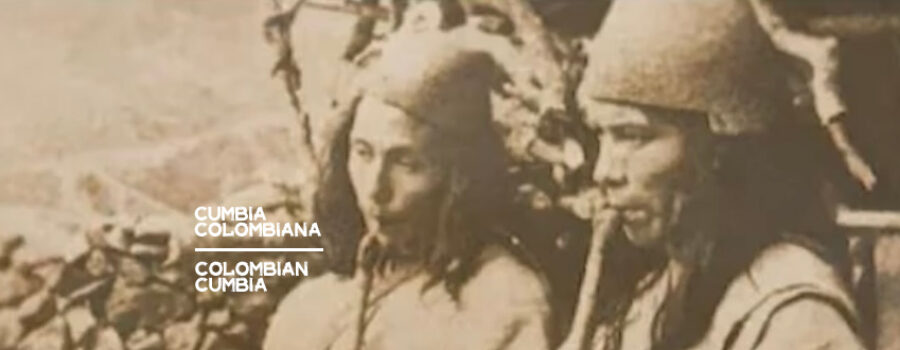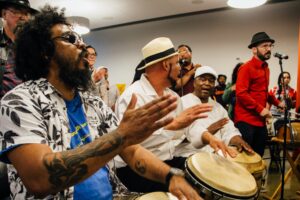By: Marcela Rosero and Movimiento Afrolatino Seattle
The word “Cumbia” comes from the Guinea Valley of West Africa.
Cumbia was born in Santa Cruz de Mompox, Cartagena – Bolivar – north of the Atlantic coast in Colombia, near the Magdalena river. between El Pocabuy and Soledad in the “Peñon Rojo”.
The word “Cumbia” comes from the Guinea Valley of West Africa. Cumbia originates from the cultural convening of the African and Indigenous peoples in this region, the creators of this great genre, “Natives and Black Cumbia”. The dresses and long and wide skirts typical in cumbia dance are influenced by European dress. Enslaved African youth, victims of the colonial transatlantic trade, made significant contributions to this great genre with the rhythm of their drums, called “El Bullerengue”, which reflected the pain and anguish of their ancestors in resistance to their condition. With the addition of the Indigenous wind instruments like the Guacharaca, Cumbia was created.
Cumbia is easy to understand and easy to interpret because it is binary. Cumbia is the union of three continents: Africa, America and Europe. Its historical reach stretches from Patagonia to Alaska and extends to all corners of the world today. Cumbia has no borders; it is a cultural movement. It is the musical link that unites all the cultures of Latin America with that simple sound of the Guacharaca that travels worldwide. People worldwide are hooked on this mystical rhythm, with its joyful and contagious spirit that brings a party atmosphere.
Musical Origins:
So with that compass as the waters of the river sound, so soft does the cumbia sound with its melodies emitted by the flutes of the sonorous winds emitted by the Indigenous peoples of the Pocabuy country. The lyrical part of cumbia is Indigenous, originally from the region of the Atlantic coast of Colombia in the Sierra Nevada de Santa Marta where one of the ancestral tribes of America existed that made this great contribution to the Tayrona culture, who contributed the sound of the winds with their flutes. Among them the most symbolic of this genre are “Las Gaitas”, cumbia instruments characterized by two types: the female, which has 5 openings and creates the melody, and the male, which has 2 holes and creates the harmony.

They are made from Millo cane, also known as “Pito atravesao”. It is a small tube 4- 6 centimeters long, open at both ends at the top, with a vibrating reed cut from the same tube and with four small holes that produce a very vibrating sound. It is played transversally, usually it is played by folkloric groups called, “Grupos de Millo”. Millo cane replaces La Gaita in the Atlantic and Magdalena regions.
The percussion instruments that produce the rhythm of cumbia include: el tambor llamador (“the caller drum”) tambor alegre (“the cheerful drum”), the tambora, the guache, and maracas. Other instruments have been incorporated such as the accordion and Güiro. Más adelante se incorporaron más instrumentos que interpretan este gran género como clarinete, trompetas, bajo, piano, y violín. Instruments such as clarinet, trumpets, bass, piano, violin interpret cumbia as well. Today in 2022 we find a great diversity of music that interprets this great Cumbia genre.
Cumbia Dancewear

Women wear very wide skirts that they twist and turn, forming figures in “S” shapes around their bodies. The traditional costume is of small red and white checkered skirts and blouses, adorned with ruffles, white lace and red bobby pins. They also wear a flower arrangement in their hair and earrings and necklaces that make them even more beautiful when dancing. They don’t wear shoes.
Men wear white fisherman pants, a white shirt, a fique backpacks, a red scarf, a Volteao hat (traditional from the coast) and a machete sheath. Both women and men do not wear shoes when dancing.
Dance is expression, resistance, and joy.
The steps are very soft and sensual and vary according to the fluidity of the rhythm. The basic step of the cumbia originates from the very smooth displacement of the right foot in its flattened position on the floor, which advances forward and is a guide for the left foot. The left foot performs its movement forward following the right due to the way in which enslaved Africans were tied by chains on the left foot with the right foot free, allowing their mobility.
Over time, when the dances were performed without chains, there was more freedom, generating movements to the sides, back to back, as well as a variety of turns. Women play with the movement of their skirts, generating a variety of figures. Some “Eses” steps that form large waves, turn according to the rhythm and the feeling of the dancers of 2 or 4 or more. Flirting between couples is very characteristic in the cumbia dance, as well as the cheerful and contagious look at the audience. The man usually follows the woman in her courtship alluding to his flipped hat. Another very important element is the candles that originally honor the fire. In its beginnings, people danced cumbia around the fire in special ceremonies and rituals; in these times there was no electric light. Over time, the candle began to be used as part of the courtship between couples. Each man who wanted to invite a lady to dance had to offer a new candle and the two danced with the candle until the wick was half consumed.
Over the years, groups of dancers were created, as well as the choreographies to interpret the flirtatious and contagious dance.
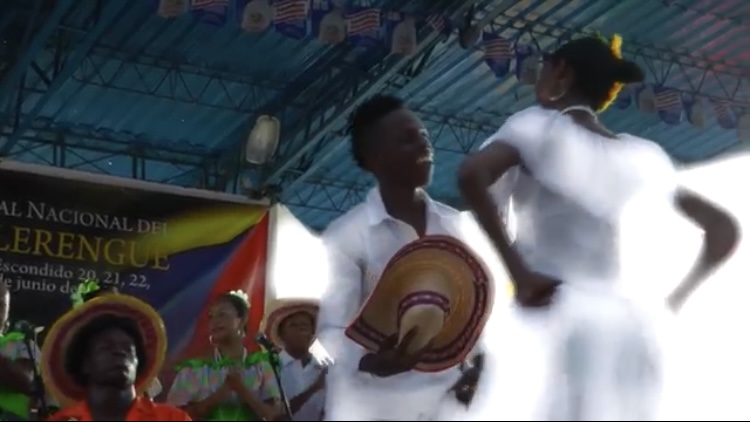
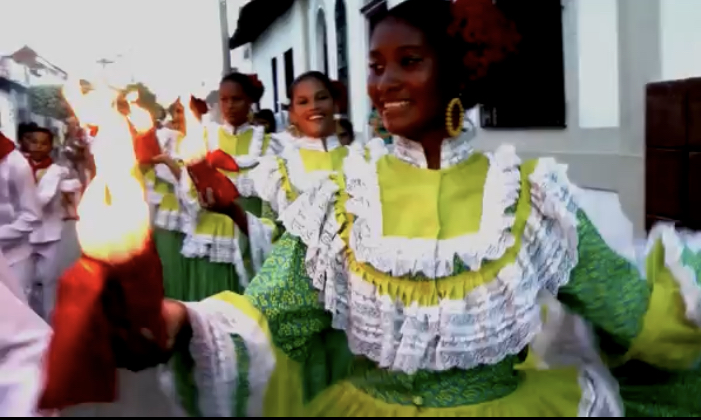
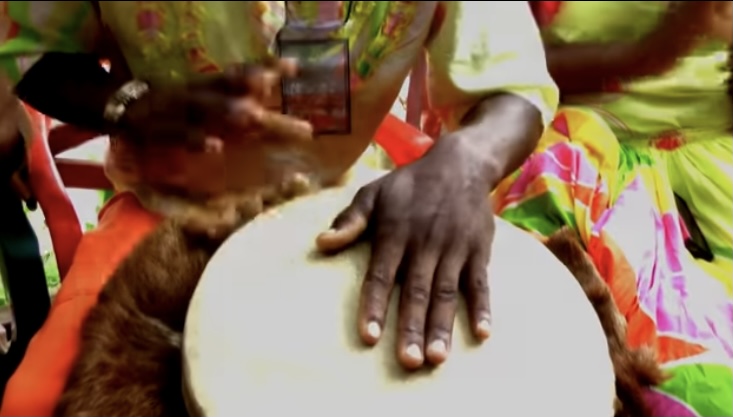
Afro-Colombian rhythms workshop by Diego Coy
Testimony and reflection by Milvia Pacheco (Executive Director of MÁS)
We concluded the Afro-Colombian rhythms workshops dictated by Diego Coy. During 5 sessions we learned the base rhythms of Cumbia, Currulao and Mapalé, among others. Diego also gave us a short introduction to Bullerengue and Colombian joropo. In each class we used our palms as the first element of contact with the rhythm. Once immersed in the rhythmic sea of palms, Diego proposed a new rhythmic pattern for a drum or instrument.
In Cumbia, for example, we go from the base of the palms: “cla, cla, cla, cla” to a pattern of two beats, one soft and the other strong, the “um..Pa” of “EL Llamador /the drum caller”, which is the drum that makes the call to the other instruments. Once that pattern was incorporated, we moved on to the next one, “Tambor Alegre /the happy drum” pattern, with seven beats exchanging hands: “To ca los tam bo res tu”, then we incorporated the Maracas and the Tambora with a rhythm that onomatopoeically, we can say, sounds like: “Cumbia, ven aca, ven aca, ven aca” Once we were all sailing on the rhythmic wave of the Cumbia with the different drums, Diego incorporated the sound of the Gaita / Bagpipes. Our voices then made a chorus and we sang: “El pescador habla con la luna, el pescador habla con la playa, el pescador no tiene fortuna, solo su atarraya”.
And like magic we were playing making music, in a session, regardless of the musical level, we all felt that we were playing cumbia. We moved through the other rhythms in the same way, letting the sounds of Afro-Colombian music transform our bodies and our sense of being in community. Thank you Diego Coy for sharing and transmitting this ancestral knowledge, thanks to Marcela Rosero for teaching us how to reflect the rhythm of cumbia in our bodies and bring movement and joy to our children in her cumbia classes for children, thanks to Unión Cultural Center for continuing to be our home, thanks to each of the participants who came to create a community and contribute with their presence so that Afro-Colombian rhythms would sound in this corner of the world. Thanks to Luis and Leona for opening the doors of The Station Cafe to make this event happen. Thanks to the MAS team for all the work they do so that spaces like this can continue to be built here in Seattle.
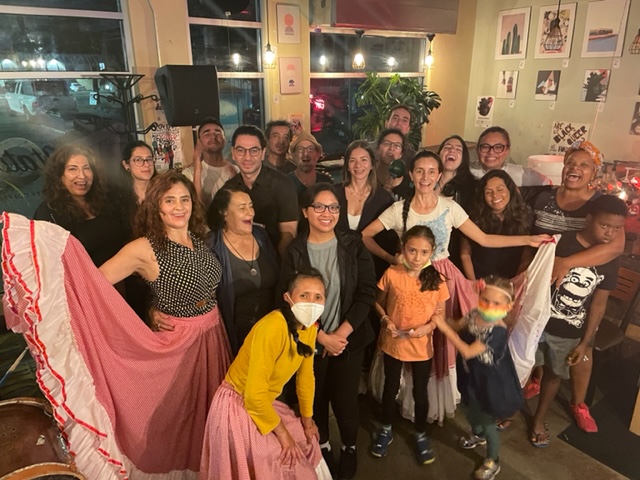
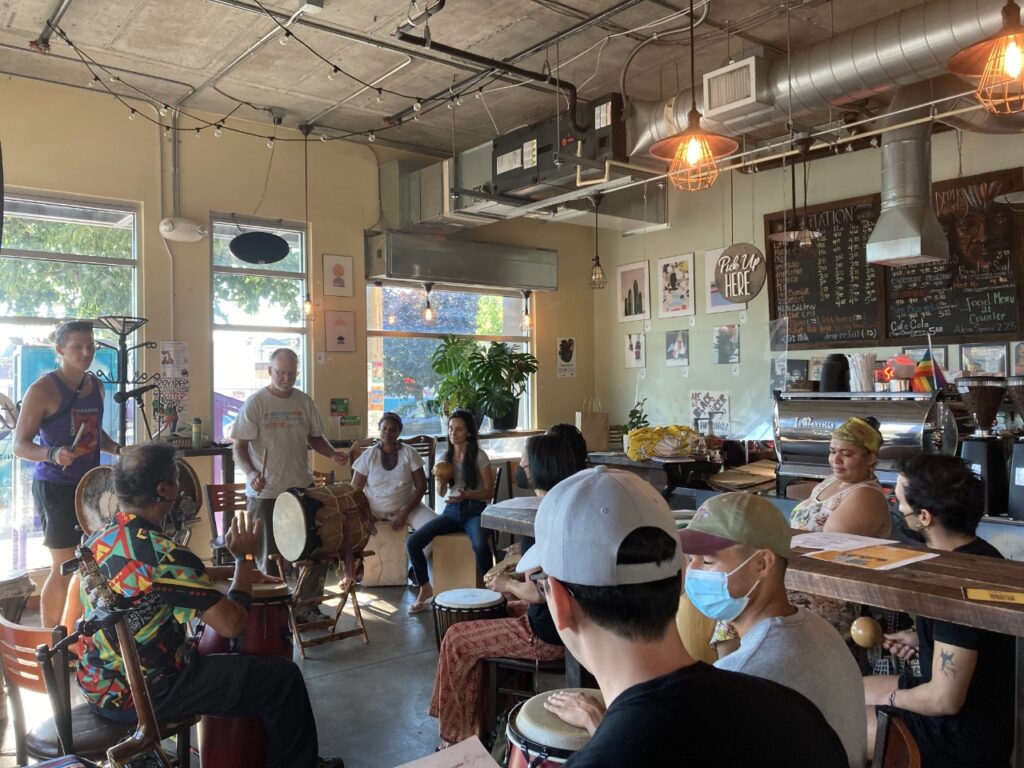
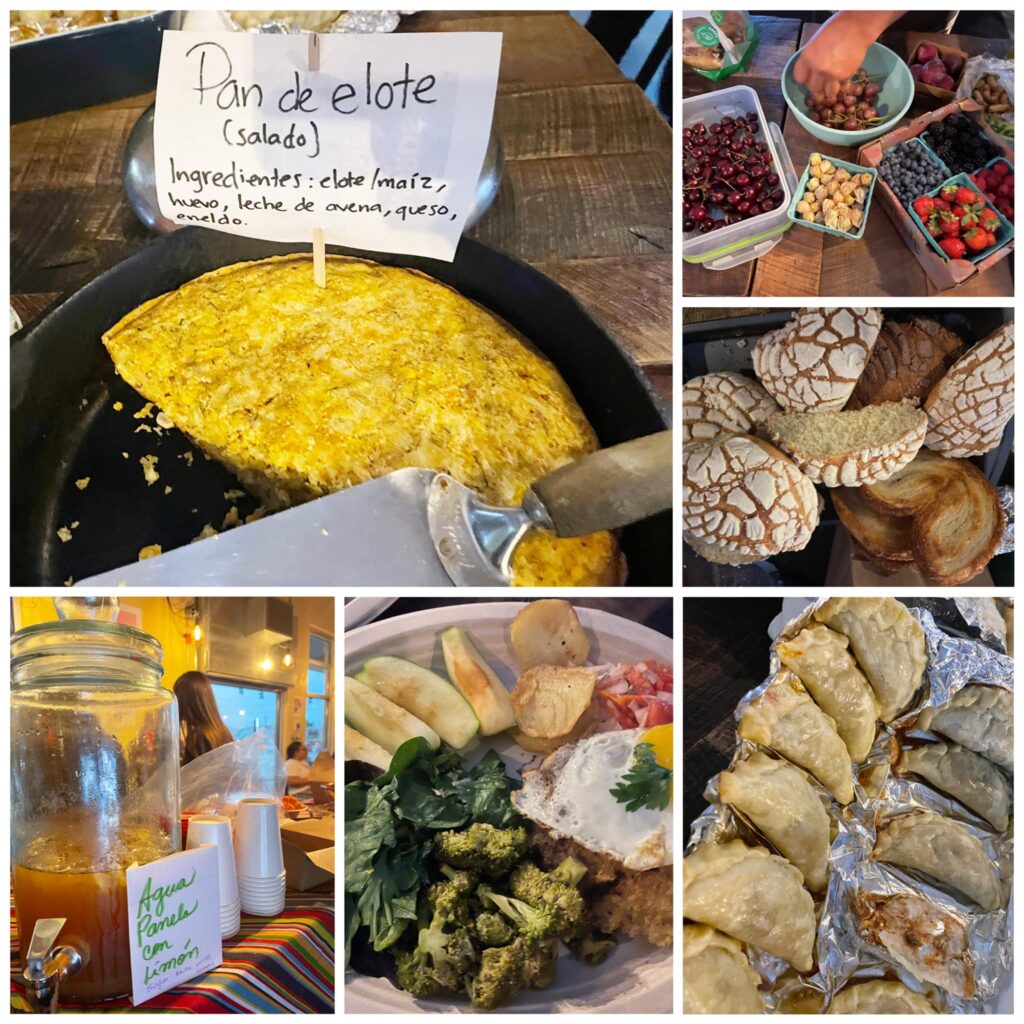
Other references
https://hablemosdeculturas.com/mapale/
https://www.gvsu.edu/cms4/asset/1B720723-B3DE-4861-0CF794BF85CC2A06/la_cumbia_colombiana_05.pdf
https://blog.redbus.co/cultura/canciones-grupos-mas-famosos-cumbia-colombiana/




